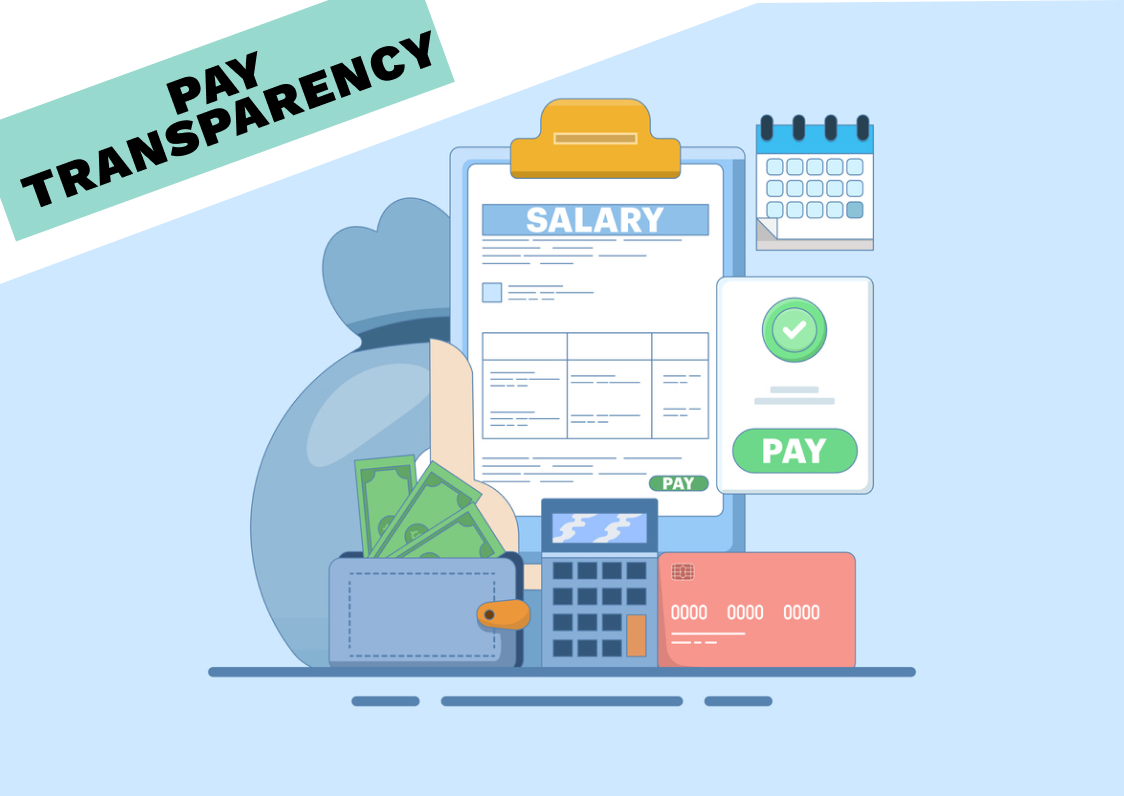The Complete Guide to Pay Transparency in France in 2024
Pay transparency is the buzzword of the day in HR circles — including here at Figures. With the EU’s new pay transparency directive just around the corner, we thought it would be interesting to discuss what the situation currently looks like in some of our most important markets.
A few weeks ago, we talked about the state of pay transparency in the UK. Although our British friends won’t be directly affected by the directive, there are some signs that the UK government will follow suit with its own set of equivalent regulations.
Today, though, we’re leaving the cold and gloomy shores of the UK behind and heading over to one of its closest neighbours: La Belle France! Read on for our full guide to pay transparency in France — including how things will change once the directive comes into play.
The current state of pay equity and transparency in France
Before diving into the ins and outs of French employment law, we thought it would be useful to talk a little bit about the current state of pay equity and transparency in the country. Here are a few stats to keep in mind.
What is the gender pay gap in France?
According to the latest OECD data, the gender wage gap in France is 11.6%. For context, this is a bit lower than the UK (14.5%) and Germany (13.5%), and similar to the EU average of 10.8%.
What about pay transparency for job applicants?
One of the key talking points around pay transparency at the moment is the idea of transparency for job applicants. Essentially, this means giving job applicants info about the starting salary for a role before they apply (usually by including it in the job description).
As we’ve talked about before, including this information in your job ads can help you attract the right candidates, and avoid wasting time on those you can’t afford.
So, what’s the status quo in France? Interestingly, it seems to be changing. A report from Indeed found that the number of job ads containing salary information has almost doubled since the beginning of 2019, reaching 49.5% in March 2023. This is in line with a wider trend: we’ve seen the same shift in other countries including the UK, Germany and the Netherlands.
Of course, it’s not all good news: salary transparency on job ads is much less common for higher-paid roles. The same Indeed report found that only 36% of ads for the best-paid positions included salary information, compared to 56% for the lowest-paid jobs.
{{cta}}
Cultural attitudes towards pay transparency in France
In many countries, talking about pay has historically been seen as a bit of a cultural taboo. But, as elsewhere, there’s evidence that this might be changing in France.
When the job site Monster surveyed French employees in 2022, they found that on average, 52% would be comfortable discussing their salary with others. But when we break this down by age, we find that younger generations are much more likely to be OK with this kind of discussion.
Among the youngest age groups surveyed, 61% of 18–24 year-olds and 65% of 25–34 year-olds said they would be happy to discuss their pay, compared to just 43% of those aged 50 and older.
Now, this doesn’t necessarily mean that attitudes towards transparency are changing. It could simply be that older workers are more likely to hold higher-paid jobs — and less likely to disclose that to others.
Only time will tell. But for now, it’s encouraging to see that the level of comfort with pay transparency doesn’t seem to dip between the ages of 18 and 34 — a period when you’d expect to see a large amount of salary progression.
What does the law say?
The rules around pay transparency in France are mostly set out in a piece of legislation called the ‘Freedom to Choose Your Professional Future Act, 2018’ — or the ‘Loi Pour La Liberté de Choisir Son Avenir Professionnel’ in French.
Aside from being a bit of a mouthful in both languages, this law requires employers to compose and publish an annual report on their ‘Equal Pay Index’ (or ‘index de l’égalité professionnelle femmes-hommes’).
Understanding the Equal Pay Index (Egapro index)
The Equal Pay Index (also known as the ‘Egapro Index’) is a metric that allows companies to assess pay equality between women and men. To calculate their index, companies have to score themselves in five areas related to pay equality, and then add up the totals to get their overall score. The result is a number from 0 to 100, with higher numbers representing better pay equality.
The five indicators that the equal pay index takes into account are:
- The pay gap between women and men, grouped by age and job level (40 points)
- The difference in the rate of salary increases between men and women (20 points)
- The gap in promotion rates between men and women (15 points)
- The percentage of employees who get a pay rise in the year following their return from maternity leave (15 points)
- The number of women among the top 10 highest earners in the business (10 points)
A score of 100 would mean a company had totally equal pay and no gender pay gap. Companies must score 75 or more, or face consequences.
Which companies do the rules apply to?
These rules apply to all public companies, and private companies with at least 50 employees. Companies that have between 50 and 250 employees only need to take into account four of the five indicators above — they don’t have to consider the gap in promotion rates between men and women.
Where does the index have to be published?
French companies have to publish their gender pay index on their company website by 1st March each year. If they don’t have a website, they have to communicate it to their employees another way.
They also have to:
- Declare it to the work inspectorate (inspection du travail)
- Share it with its social and economic committee (comité social et économique)
The consequences of a low score
When a company’s equal pay index is lower than 75, it must conduct an in-depth pay equity analysis and put in place measures to raise its score. Companies that have a score lower than 75 for three years in a row can be fined up to 1% of their total payroll. This fine also applies to companies that fail to publish their equal pay index.
{{cta}}
Results of the Egapro Index (2023)
Each year, the French government publishes the results of the Equal Pay Index once all the data has been gathered. Here’s some information about the situation in 2023:
- 74% of enterprises published their Egapro Index (up from 54% in 2020)
- The average score for those companies that published their result was 88
- 93% of companies had a score of 75 or higher
In general, this shows that the situation in France is pretty good — but there is still work to be done. The results also show that only 2% of companies received the top score of 100 (meaning they are totally equal in their treatment of men and women). And a total of 77 enterprises have had a score of less than 75 for four years running.
There are two particular measures that the government is keen to focus on in 2024 and beyond.
- Percentage of women receiving a pay rise after maternity leave: In 2023, the average score for this indicator was 13/15 — but a total of 1434 enterprises (or 6% of the total) got a score of zero in 2023. Of those, 143 haven’t made any progress on this indicator since 2020.
- Number of women among the top ten highest earners: Although 28% of companies had an equal (or almost equal) split, a third have less than two women among their ten highest-paid employees — giving them a score of zero in this section.
In 2024, companies in France will have to work hard to increase the representation of women in top positions, and to ensure women returning from maternity leave are treated fairly.
The EU pay transparency directive: What will change in France?
The EU pay transparency directive is now being rolled out across all 27 of the EU’s member states — including France. These countries have until June 2026 to transpose the legislation into national law. That means that some elements of France’s pay transparency rules will be changing over the next few years.
As a reminder, here are the main areas addressed by the directive:
1. Gender pay gap reporting
Companies with over 100 employees will have to submit regular reports on their gender pay gap. Those with a gender pay gap of 5% or more will be required to conduct a joint pay assessment with worker representatives and take corrective action to reduce it.
2. Employee access to pay information
Employees will have the right to request information on pay levels and the criteria for pay progression within their organisations.
3. Burden of proof in pay discrimination cases
When an employee suspects they have been the victim of pay discrimination, the employer will have to prove that discrimination has not taken place — shifting the burden of proof away from the worker.
4. Pay transparency for job seekers
Employers will have to provide salary information to job applicants before the interview stage, and will not be allowed to ask candidates about their salary history during the recruitment process.
While we don’t know exactly how France will implement the directive, it’s clear that some of the rules around pay transparency will change. For example, it’s not currently obligatory to include salary information in job ads (and as we’ve seen, about half of companies still don’t). Though there’s some evidence that this is already becoming the norm, the directive will make it obligatory for all employers.
France will also have to comply with the directive’s requirements for gender pay gap reporting. In October 2023, the French Prime Minister announced a reform of the rules surrounding the Egapro Index.
For example, some ideas that have been suggested include:
- Requiring companies to consider the representation of women in the lowest 10% of earners in the business
- Requiring more transparency on how companies calculate their gender pay gap
- Removing the tolerance threshold of 5% for the first indicator (gender pay gap)
- Creating a tool to help small companies calculate their index
- Requiring companies to consider the percentage salary increase received by men and women, instead of just the percentage of men and women receiving a raise
At this point, it’s not yet clear exactly what the changes to the law will look like. But the idea is to bring it in line with the rules set out in the directive while also tightening some loopholes and making the index more effective.
Learn more
Want to learn more about the EU pay transparency directive and how it will impact European companies? Head to our full guide to find out what you need to know!
Summarize this article with AI
No time to read it all? Get a clear, structured, and actionable summary in one click.




![How Countries Are Implementing the EU Pay Transparency Directive [Updated December 2025]](https://cdn.prod.website-files.com/67d7e1e2f12d2942bb8d0309/6800da19bf0ad5c3d89c6d56_67e2c2cbef618bc98559ce0c_679b9fd8dac8fc3762b7e816_General%252520Topic.avif)

